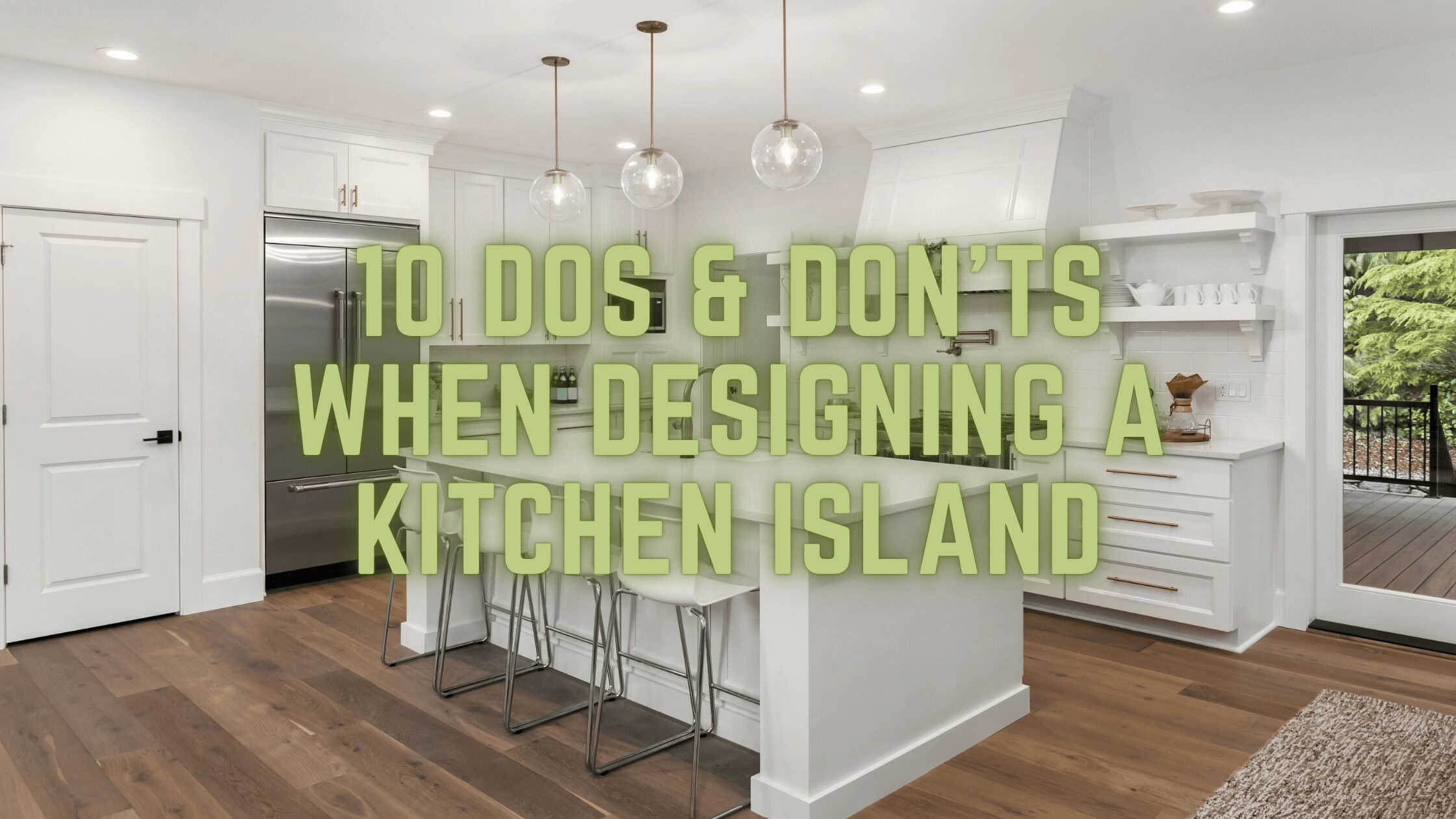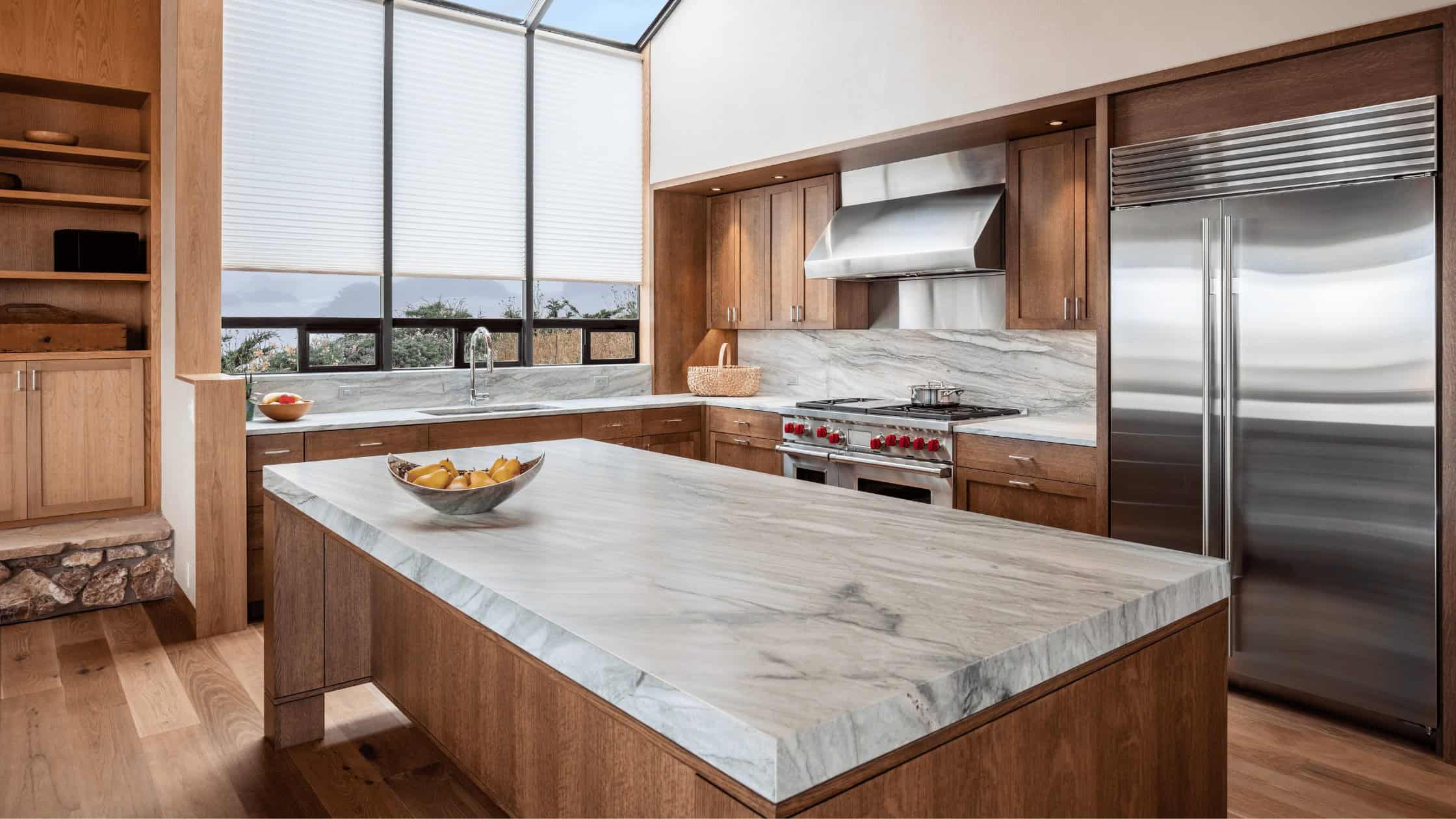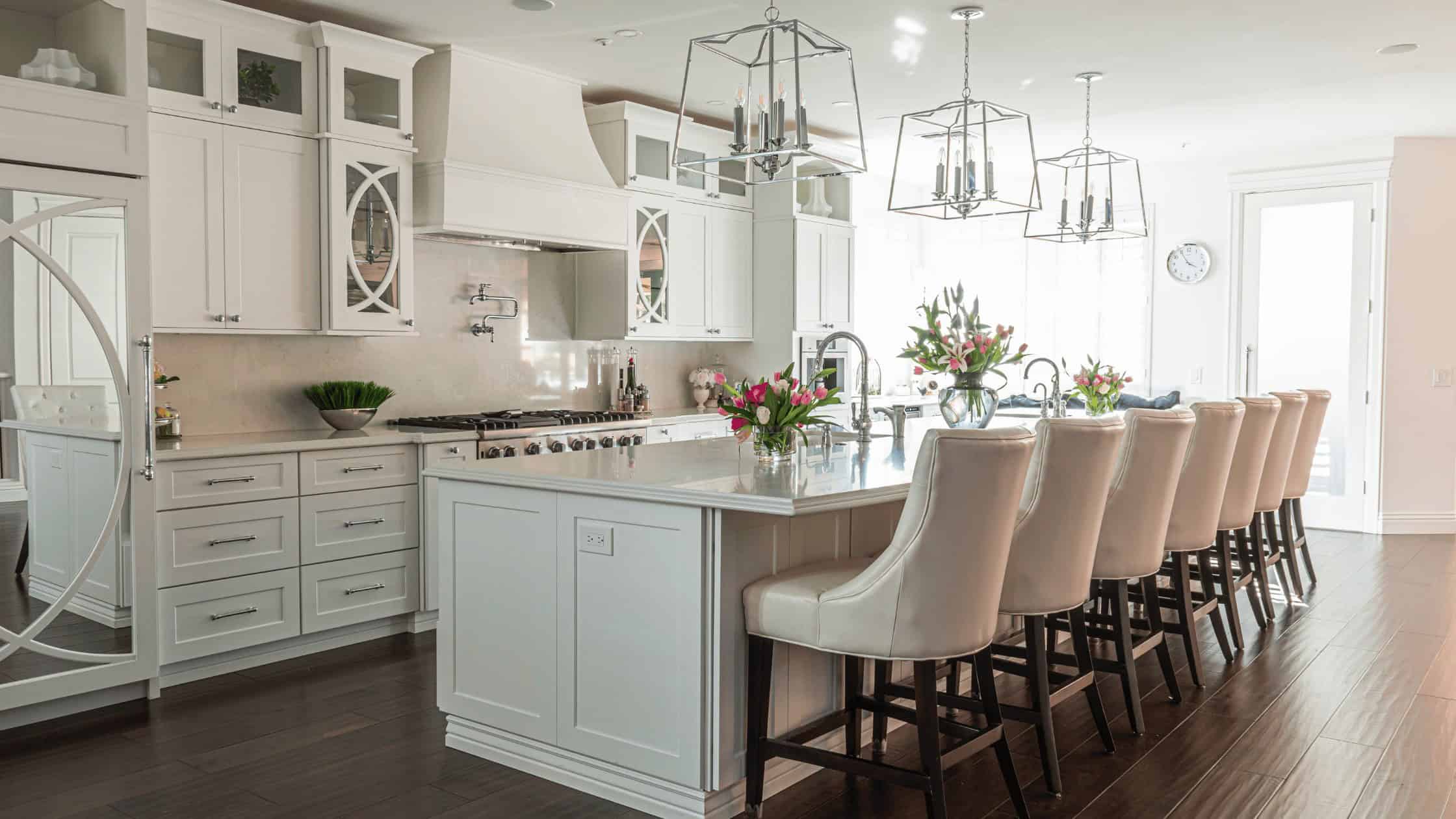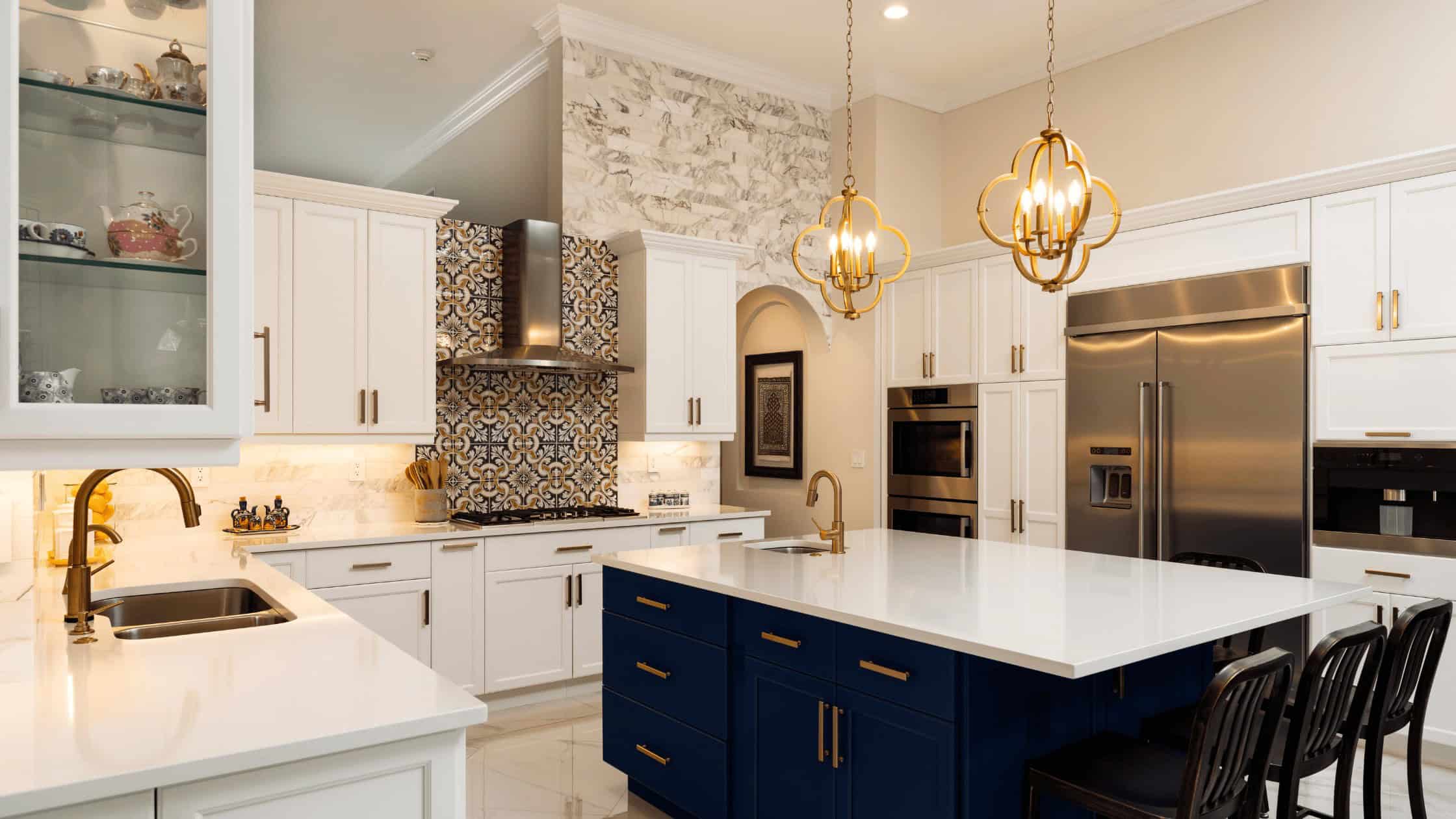Planning a kitchen remodel? Check out these pro tips for designing a great looking and practical kitchen island.
1. Do Consider How You’ll Use the Island
-
- If you like entertaining or eating everyday meals at a breakfast bar, then an island with more overhanging area and less cabinetry or storage underneath might be for you. Think about how you imagine using the bar both every day and on special occasions. Think about whether the sitting area needs to be closer to the fridge and pantry. This is another way of managing who is walking in and out of the kitchen, and who can be kept on the outside edges of the island — for safety as well as to avoid overcrowding in the kitchen.
2. Do Choose a Tough, Easy-Care Countertop Material
-
- Kitchens are places of heavy traffic flow and productivity, so a good, durable natural or engineered stone for the countertop is crucial. You’ll also want it to be scratch-resistant and easy to clean — and the same goes for your cabinetry and floorboard materials. Choosing good-quality fixtures such as sinks and faucets is always preferred as they get so much use and need to last.
3. Don’t Forget Power Outlets and Appliances
-
- Make sure power outlets and appliances are well-placed so they don’t dominate the appearance of the island, are easily accessed and make the functionality of all sides of the unit work really well. Consider what will be plugged in — it probably won’t just be a hand mixer, but also phone chargers, laptops and the like. A charging drawer for items such as these can be a smart inclusion.
4. Do Make the Island as Long as Possible Without a Seam
-
- Slabs of stone come in a range of lengths, but if your kitchen is big enough for one measuring about 118 inches by about 36 inches, you’ll have the perfect-size island for preparing food and entertaining. The maximum length of some brands and materials is 118 inches, so if you choose such a brand or material, keep the length at 118 inches or less, so the countertop can be made in one piece without a seam. Seams on islands are not aesthetically pleasing, so avoid this if you can. A minimum width of about 36 inches will enable you to have bar stools at the back of the island, so your family and friends can perch there to eat or marvel at your cooking.
5. Do Get the Proportions Right
-
- Getting the proportions of your island correct lets you work efficiently in the space and ensures that traffic flow is maintained.
Some key measurements to follow:- You want a minimum of 39 inches circulation space around the island.
- The overall height of the island should be between 36 and 37 inches.
- The minimum island width would ideally be about 36 inches and the length would be about 47 inches.
- The countertop should be between three-fourths-inch and about 3 inches thick.
- If you want to include bar stools around the island, you’ll need 12 inches of under-countertop space.
- Getting the proportions of your island correct lets you work efficiently in the space and ensures that traffic flow is maintained.
6. Do Consider Alternatives if You Don’t Have the Room
-
- An island that’s too small will result in a cramped workspace, rendering it useless, so ensure you have enough room for it. If you’re working with a smaller space, a better option may be a peninsula unit, which has one short end butted up against a wall.
7. Do Mix Materials
-
- Too many kitchens have enormous islands that might provide a lot of countertop space but effectively take over the room and look like a big lump in the middle. Using different materials can break down the scale of an island. However, balance is key — too many materials and details start to look messy and fussy. When you’re choosing materials and colors for your island, make sure they harmonize with any hues in the adjoining rooms.
8. Do Integrate Generous Drawers and a Pull-Out Bin
-
- For functionality purposes, it’s a good idea to have your utensil drawer on the island and potentially your bowls and plates too. This gives easy access to the important everyday items you usually use an island for, such as serving up food. Having your trash bin integrated into the island just below your work surface is another important functional element, as it allows you to scrape the scraps straight into the garbage. It also helps you stay part of the action with family or friends when cleaning up the kitchen, as you’re facing them and helps keep your floor mess-free.
9. Do Prioritize Functionality
-
- Think about how you’ll be working in the space and include functional fixtures and storage to suit. If this is going to be your main preparation area, include plenty of clear countertop space and easy access to knives and chopping boards. Also ensure that your trash bin and sink are close by.
10. Don’t Be Afraid to Be Bold
-
- An island can be a great place to make a statement, so if you’re eyeing some feature cabinetry or a bold cabinetry, then consider this your place to use it.
I hope you all had a wonderful Thanksgiving with your family and friends! Until next month!
Resources: Houzz.com





